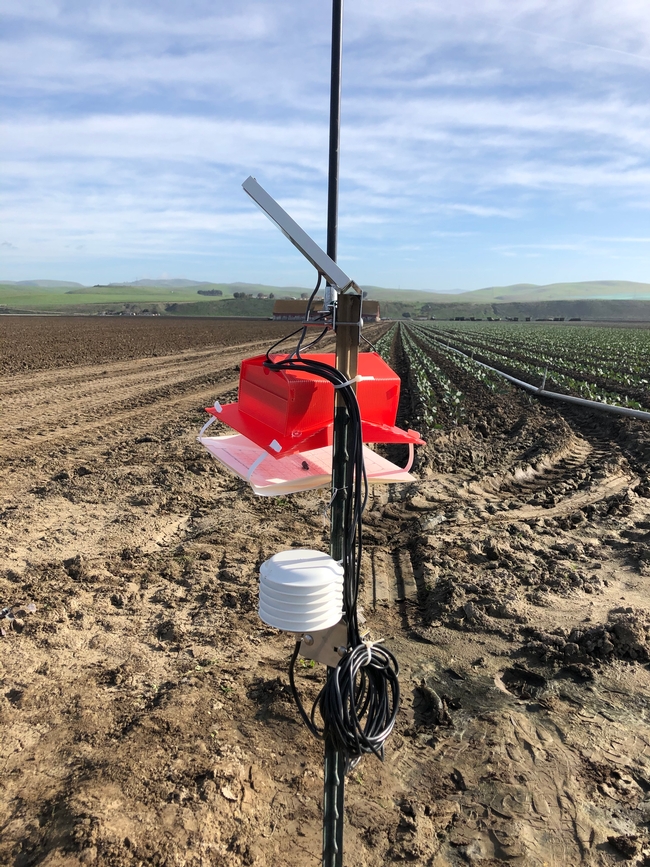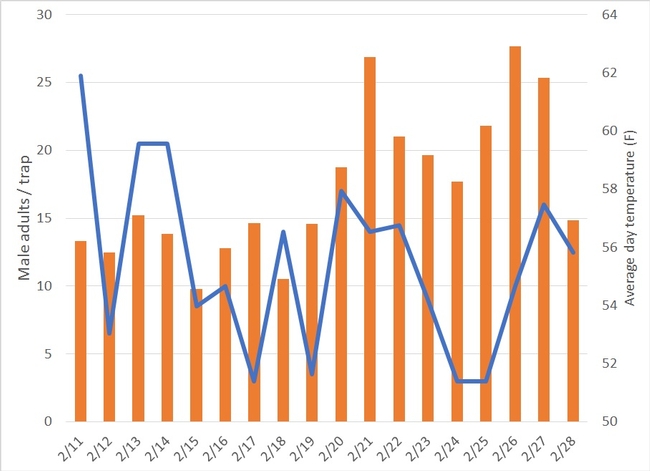Diamondback moth adults have been actively flying across the Salinas Valley these winter months, based on our area-wide monitoring program. There were a couple of locations where we recorded 'zero' captures during January. It looks like low temperatures in the Valley just slowed down this moth development. At this point, it will be difficult to propose that there was an overwintering generation this past winter. Specially in the Castroville area, where there has never been a 'zero' capture from our two traps. Having an overwintering generation would have represented 'zero' captures from all or most of our pheromone traps across the Valley.
We continue the effort to validate automated pheromone traps. In partnership with AgCeleration and TrapView, we are testing in the field a new prototype (Fig. 1). So far, there is no significant difference on the weekly captures between this new automated trap when compared to a typical cardboard pheromone trap. These automated traps provide real-time information on the number of diamondback moth males captured in a daily based. This type of information could ultimately help to understand the trends of the adults moving across the farmscape, strengthening an IPM program in cole crops.

Daily captures of diamondback moth male adults indicate that the highest populations are currently located in the Castroville area. On average, we have captured 12 males per day since February 11th (Fig. 2.). Most of the fluctuation on number of captured adults might have been mediated by air temperatures. The current trend shows that adult captures are going down. It is likely that large populations of this pest were able to go through a generation in the Castroville area using crop, weed host plants, and crop residues. It is important to recognize that:
1) Castroville area continues to be a hot spot with the largest diamondback moth population across the Salinas Valley.
2) Promptly scouting of blocks with cole crops will help to early detect the presence of economically relevant numbers of caterpillars.
3) Manage weeds, specially at the surrounding areas of established blocks, will reduce the overall population.
4) Promptly elimination of cole crop residues from previous plantings will reduce the overall population.
5) Rotate the use of insecticides will reduce the possibility to develop insecticide resistance.
6) Use of adjuvants/stickers will reduce the possibility of washing away any insecticide spray onto waxy cole crop leaves.
If you would like to learn more about the current status of diamondback moth in the Salinas Valley, please contact Alejandro Del-Pozo at adelpozo@ucanr.edu or call 831-759-7359.
